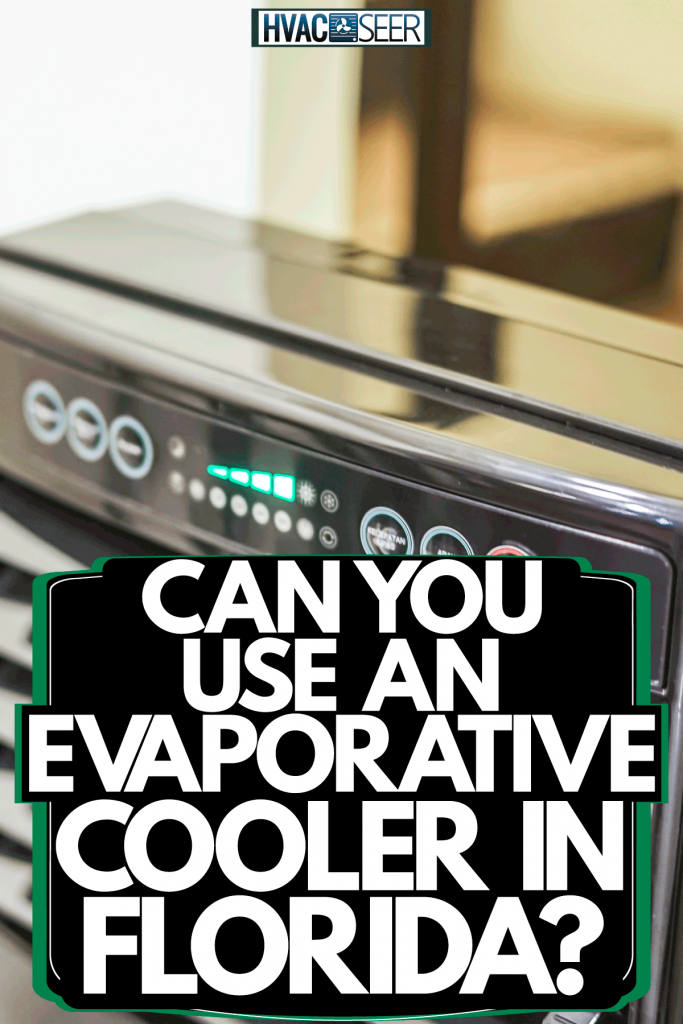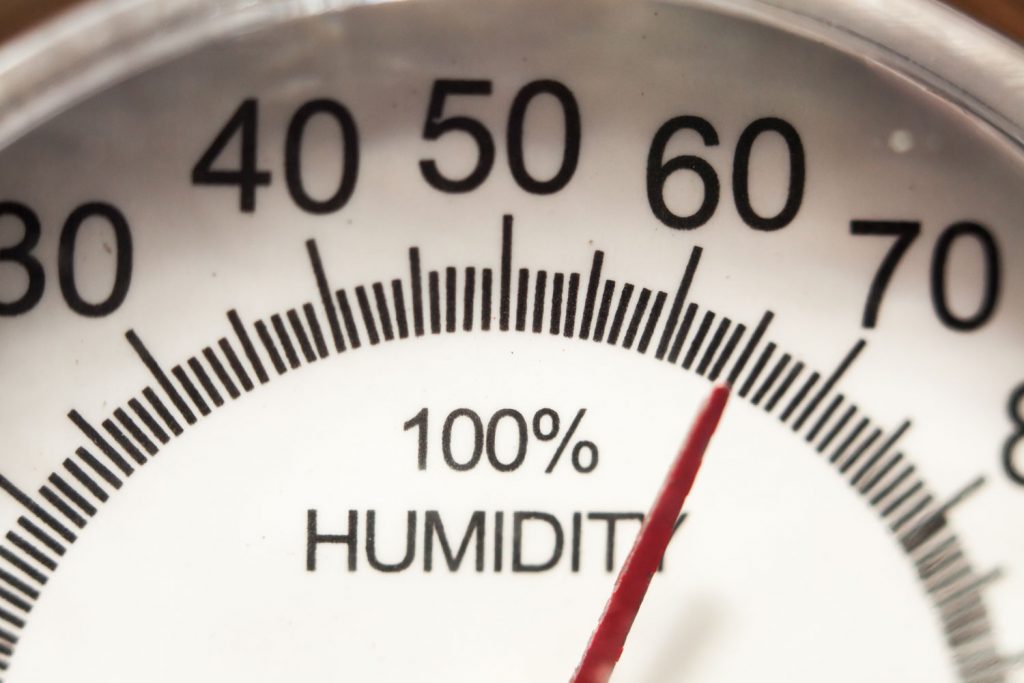You are considering all of your cooling system options for your home and want to know if an evaporative cooler can be used in Florida. Several sources around the internet will tell you that evaporative coolers can only be used in hot, dry climates. Since Florida is a humid state, you might think that it is not practical to use an evaporative cooler. So, can you use one in Florida? We did the research to bring you the answer.
Evaporative coolers (also known as swamp coolers) can be used in any climate because no place has 100 percent humidity. The process of using an evaporative cooler does add more humidity to the air, which is not something you would want during the summer in a humid location like Florida. Technology has improved to prevent the addition of humidity in the air, and you may also decide to use a de-humidifier in your Florida home.
Now that you know it is possible to use an evaporative cooler in a Florida home or workplace, you might wonder if it is more efficient than an air conditioner. This question has several layers and factors to consider. This post will detail the key differences in energy consumption and efficiency for evaporative cooling units vs. air conditioning units in Florida. Without further ado, let's get into it!

Can You Use An Evaporative Cooler In Florida?
Any location with less than 100 percent humidity can benefit from the use of an evaporative cooler. That means there is room for more evaporation to occur into the air. The swamp cooler uses evaporation to create cool air that it pumps into your home.
It does work most efficiently when the relative humidity is below 55 or 60 percent. Under most circumstances, the evaporative cooler will not cool your home to your satisfaction if the humidity is above 70 percent.
At What Humidity Do Evaporative Coolers Become Ineffective?
Evaporative coolers can provide some amount of cooling effect if the humidity is less than 100 percent. This is not practical in terms of effectiveness because the amount of cooling effect it provides at high humidity levels will not cool the house to your satisfaction.
It is generally considered to be ineffective when less than 70 percent. The evaporative cooler will work best with the lowest amount of relative humidity in the air.
Why Does An Evaporative Cooler Seem To Stop Working?
An evaporative cooler can seem like it is not working when being operated in a humid environment. The humidity of the surrounding air will raise as you run the cooler. As the humidity increases, the effectiveness of the swamp cooler decreases.
Without some kind of opposing force to cycle air or remove humidity from the air, the swamp cooler will reach a point of ineffectiveness as the surrounding air nears 100 percent or full saturation.

How Do You Use Evaporative Cooling In Humid Weather?
A swamp cooler can be used in high humid environments like Florida, but you need to use it correctly. You must counter the humidity that is being added to the air, and there are a few possible ways to do this.
The most common way is to open a door or window. This allows the outside air to come in that is drier than the humidified indoor air. Creating a cycle of fresh air allows the swamp cooler to work correctly and more efficiently.
Another way is to use a dehumidifier. There are many kinds, including some small units that can be used to help your evaporative cooler work more efficiently. Any humidity that is removed from the air provides more space for the cooler to evaporate water.
Eva-Dry Wireless Mini Dehumidifier
Click here to see this dehumidifier on Amazon.
Will Opening A Door Let The Cool Air Out?
Practical knowledge for air conditioners tells us to keep all doors and windows closed to prevent the cold air from escaping the house. You don't want to pay steep electric bills just to watch the cool air drift outside.
An evaporative cooler needs a cycle of new, drier air to work properly. This method will increase the cool air the cooler is blowing, so the tiny amount of cool air that escapes is offset by increased efficiency.
Do Evaporative Coolers Work In South Florida?
South Florida in the summer can have humidity levels as high as 90 percent in the morning. This humidity level usually drops below 60 percent in the afternoon as the temperature rises to over 90 degrees.
The humidity drops low enough for efficient afternoon cooling. However, you may feel extra hot in the late morning hours as the humidity levels are still soaring and the temperature is gradually increasing.
An evaporative cooler can technically work in south Florida, but it is not the best solution for all hours of the day to cool your home in the summer.
Where Do Evaporative Coolers Work Best?
Evaporative coolers work best in open areas that allow for more airflow and exchange. The best geographical location for evaporative coolers is anywhere with dry heat in the summer.
In the continental United States, the western states are drier and more suitable for evaporative coolers. This includes most or all of the Mountain and Pacific time zones.
Evaporative coolers can work and be effective in other states as long as fresh air is cycled into the cooling area.
Does An Evaporative Cooler Increase Humidity?
An evaporative cooler does increase the relative humidity in the room. Swamp coolers work by evaporating water that is vaporized into the air, which is an increase in relative humidity.
You can expect the relative humidity of the room to double for every 20 degrees the unit cools. 90 degrees and 50 percent relative humidity can be lowered to about 70 degrees, which would cause the humidity to saturate at 100 percent.
You can counter the increase in humidity by making sure a window or door is open. This will cycle new air to push out the overly saturated air. You can also use a de-humidifier to counter the effects, which will also help to increase the efficiency of the evaporative cooling unit.
For a more detailed discussion on this topic, check out this post: Does An Evaporative Cooler Increase Humidity?
What Are Some Other Ways To Decrease Humidity?
There are some cheaper alternatives to remove moisture from the air to counter your evaporative cooler. Some examples of natural dehumidifiers are baking soda, kitty litter, and activated charcoal. If you wish to use one of these options, you will need a container to catch the water.
The most common way to make your own dehumidifier is to punch some holes in the side of a coffee can and also on the lid. Then place the baking soda, kitty litter, or activated charcoal inside the coffee can in the room you are trying to dehumidify.
Check out this post for more interesting and useful evaporative cooler hacks, including methods to improve the cooling efficiency: 13 Evaporative Cooler Hacks You Should Know
Anywhere Dehumidifier With Active Charcoal
Click here to see this dehumidifier on Amazon.
How Many Open Windows Does A Swamp Cooler Need?
The number of windows you should have open depends on the size of the windows and the cubic feet per minute of power the evaporative cooler provides.
Generally, opening one to two average size windows should be enough to help your swamp cooler work effectively. This assumes that you have chosen the correct size evaporative cooling system for the space you wish to cool.
A more detailed answer includes an equation for figuring out how many square feet of space you should have open.
For a complete breakdown of this equation and how to determine the number of windows you should open, check out this article: How Many Open Windows Does A Swamp Cooler Need?
In Closing
Evaporative coolers can work in Florida, even in the southern part. In high humid areas, you may be able to cool the temperature by 10-12 degrees. T
his might not be enough of a temperature drop to cool your home to a comfortable temperature, so an evaporative cooler may not be the best option for high-humid areas like Florida.
Evaporative coolers will work best in climates with hot, dry summers. In the United States, the western states have the best weather and relative humidity for a swamp cooler to work efficiently.


